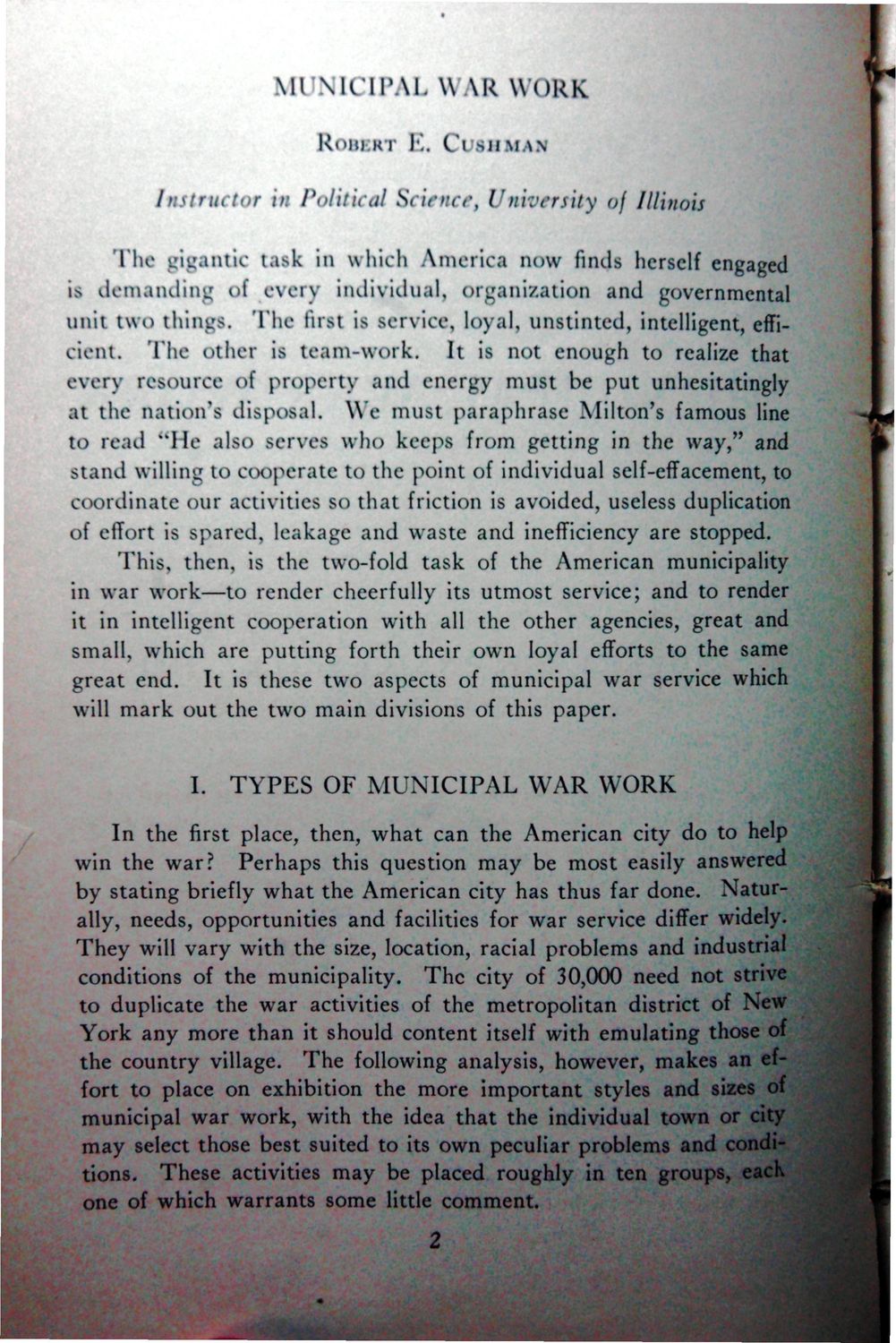| |
| |
Caption: War Publications - WWI Compilation 1923 - Article 3
This is a reduced-resolution page image for fast online browsing.

EXTRACTED TEXT FROM PAGE:
M U N I U I W I . WAR WORK Roiil.KT I'.. C t S H M A N Instructor in Political Scirnce, University of Illinois The gigantic task in which America now finds herself engaged is demanding of every individual, organization and governmental unit two things. The first is service, loyal, unstinted, intelligent, efficient. The other is team-work. It is not enough to realize that even resource of property and energy must be put unhesitatingly at the nation's disposal. We must paraphrase Milton's famous line to read "He also serves who keeps from getting in the way," and stand willing to cooperate to the point of individual self-effacement, to coordinate our activities so that friction is avoided, useless duplication of effort is spared, leakage and waste and inefficiency are stopped. This, then, is the two-fold task of the American municipality in war work—to render cheerfully its utmost service; and to render it in intelligent cooperation with all the other agencies, great and small, which are putting forth their own loyal efforts to the same great end. It is these two aspects of municipal war service which will mark out the two main divisions of this paper. I. T Y P E S OF M U N I C I P A L WAR WORK In the first place, then, what can the American city do to help win the war? Perhaps this question may be most easily answered by stating briefly what the American city has thus far done. Naturally, needs, opportunities and facilities for war service differ widely. They will vary with the size, location, racial problems and industrial conditions of the municipality. The city of 30,000 need not strive to duplicate the war activities of the metropolitan district of New York any more than it should content itself with emulating those of the country village. The following analysis, however, makes an effort to place on exhibition the more important styles and sizes of municipal war work, with the idea that the individual town or city may select those best suited to its own peculiar problems and conditions. These activities may be placed roughly in ten groups, each one of which warrants some little comment. 2 •
| |